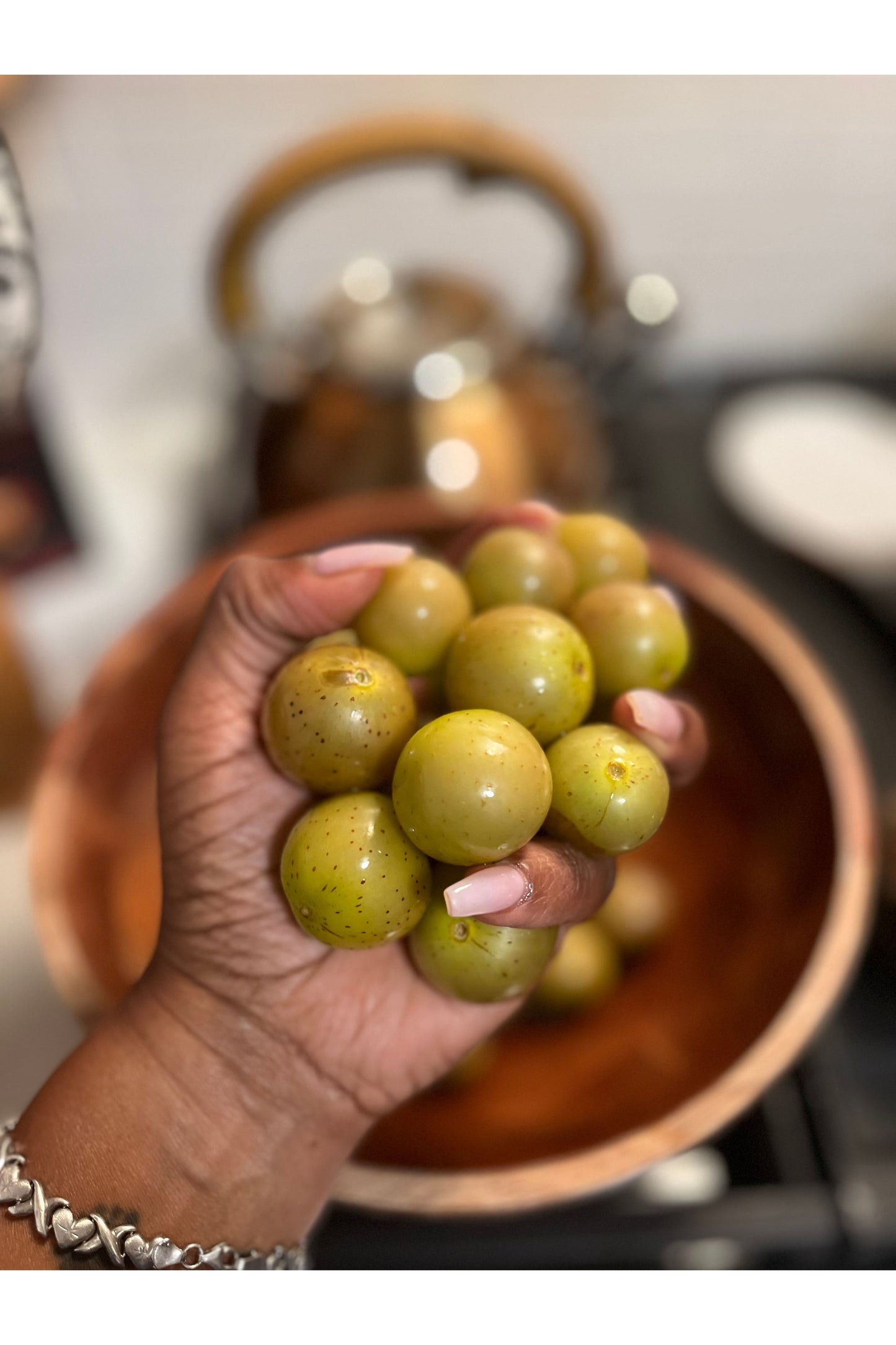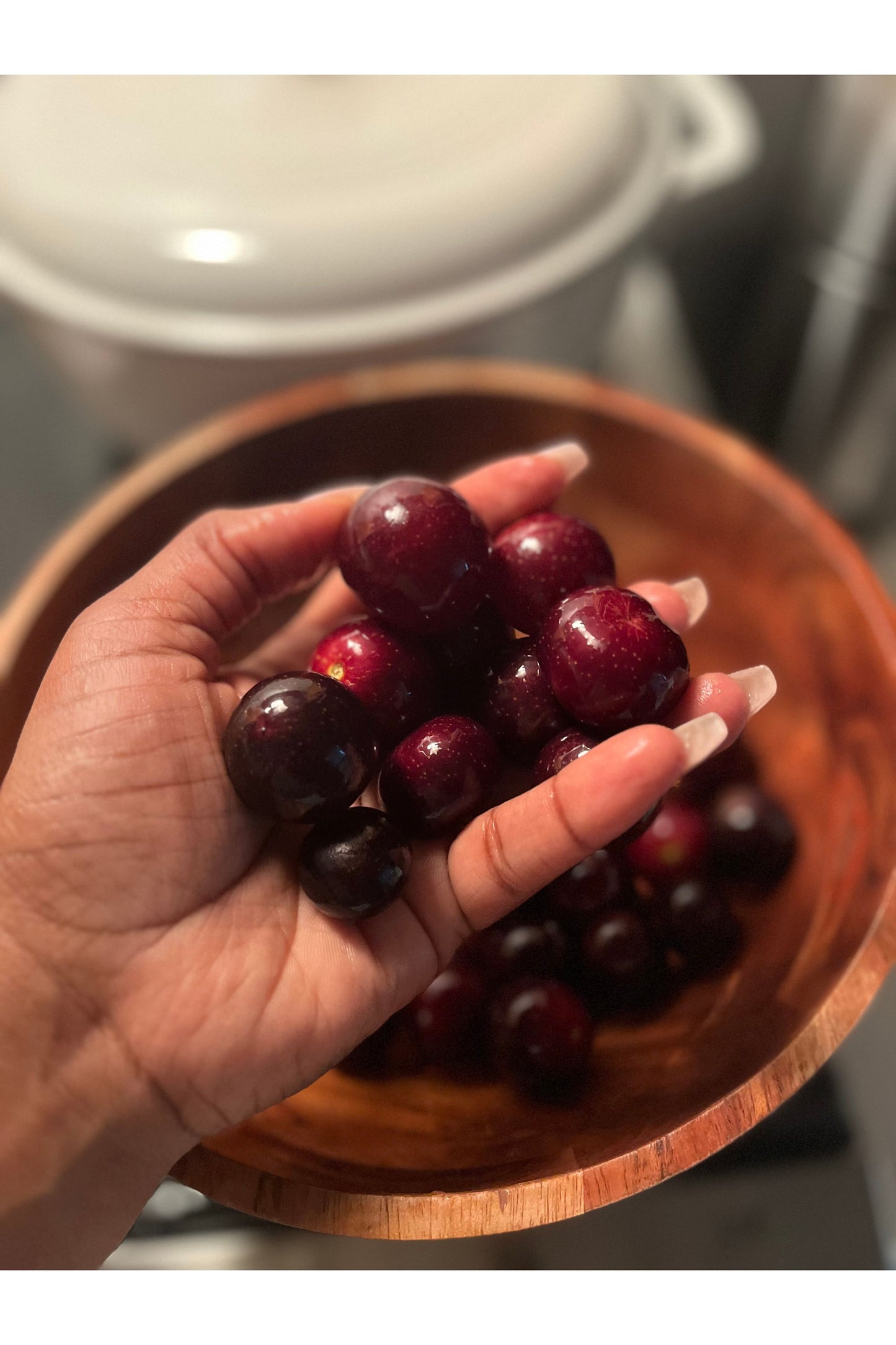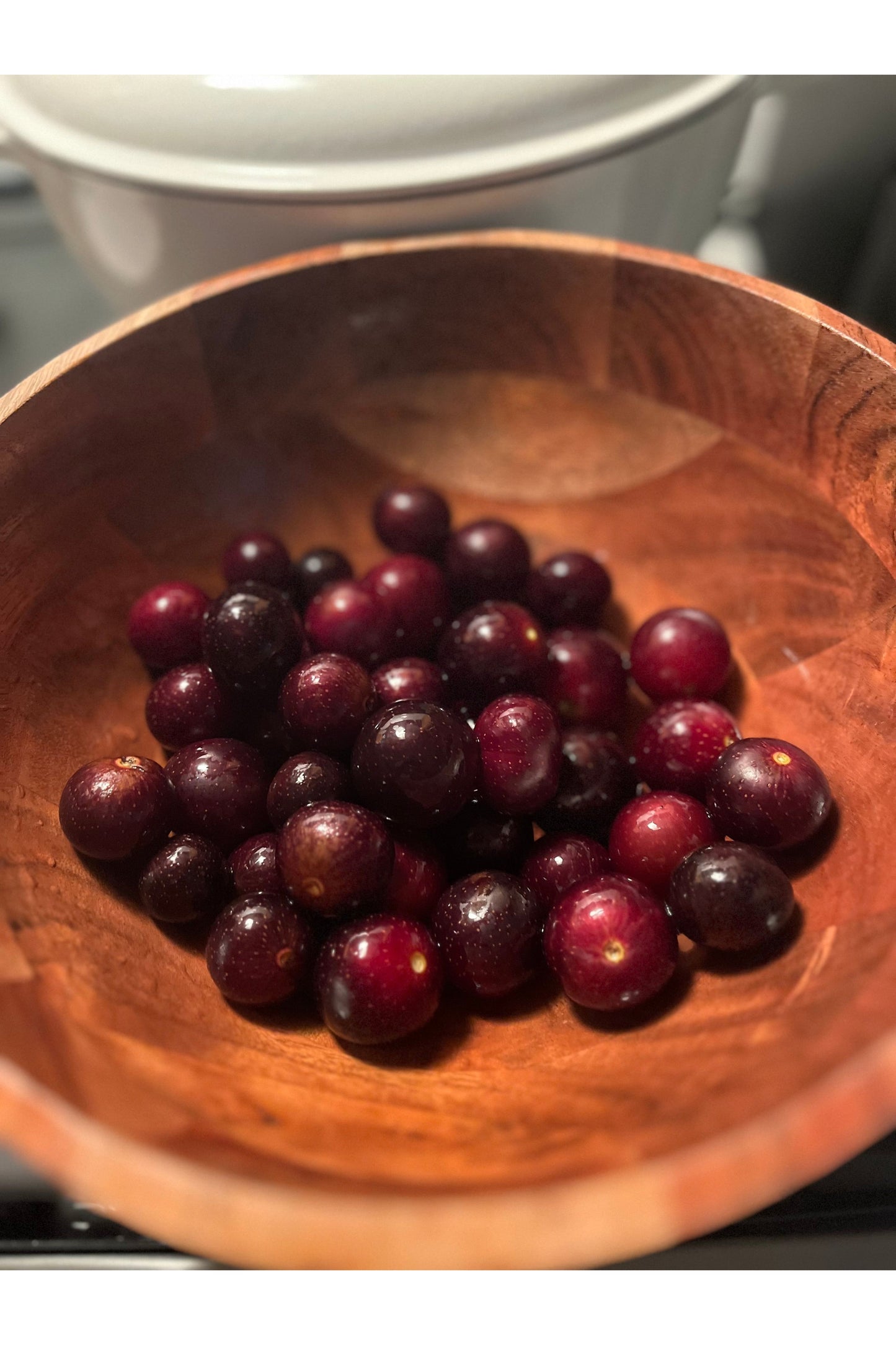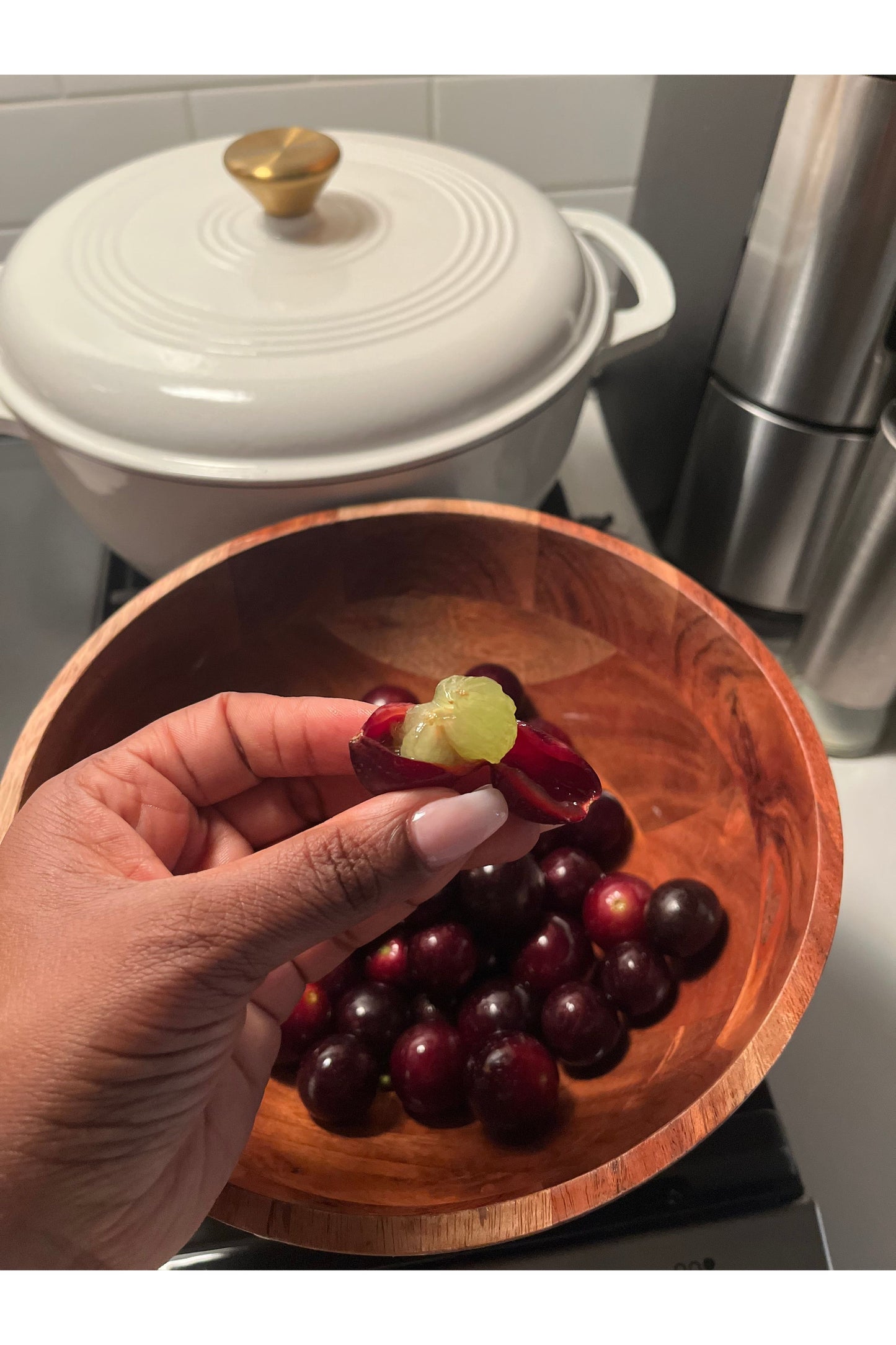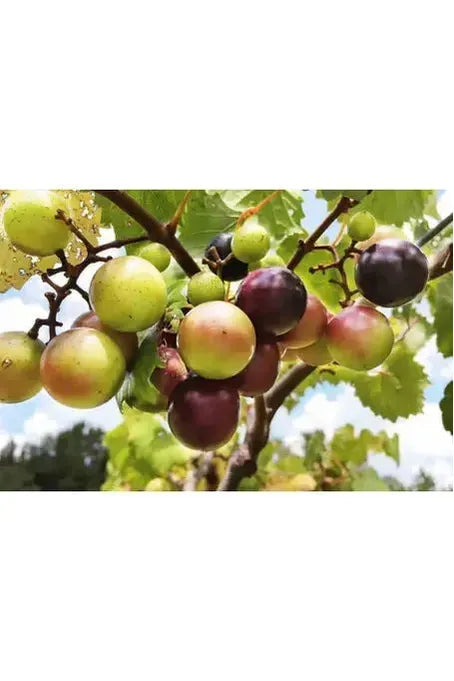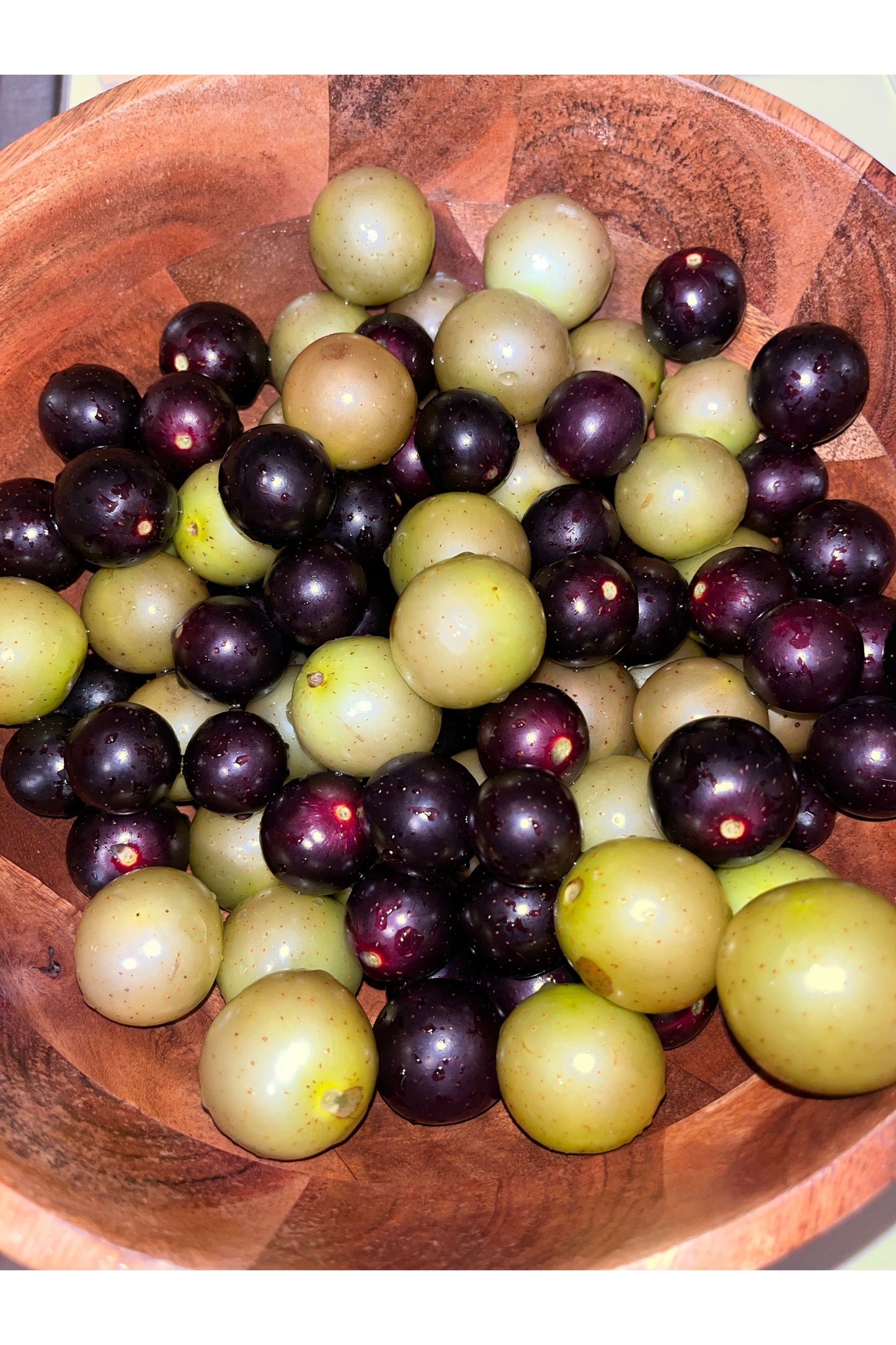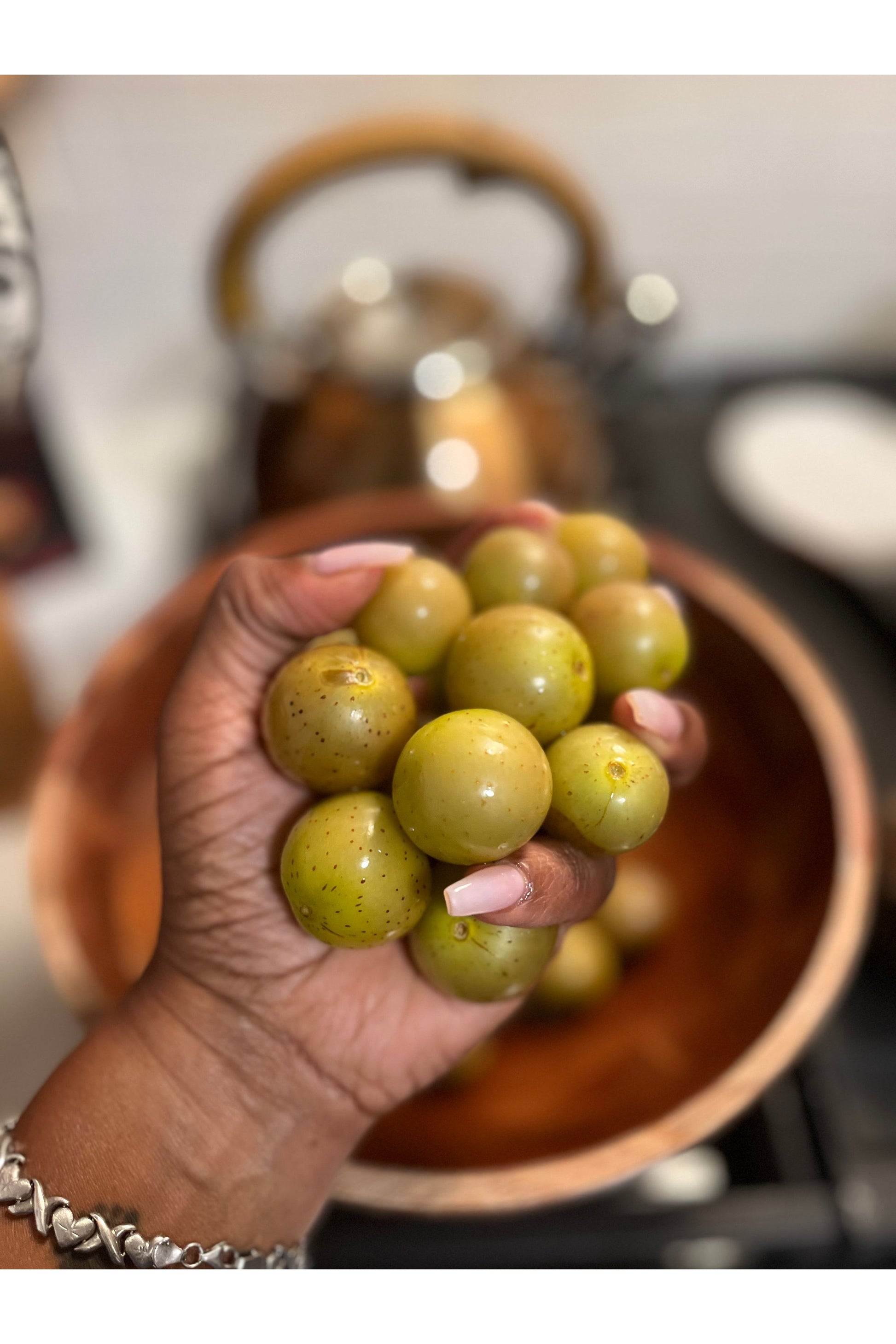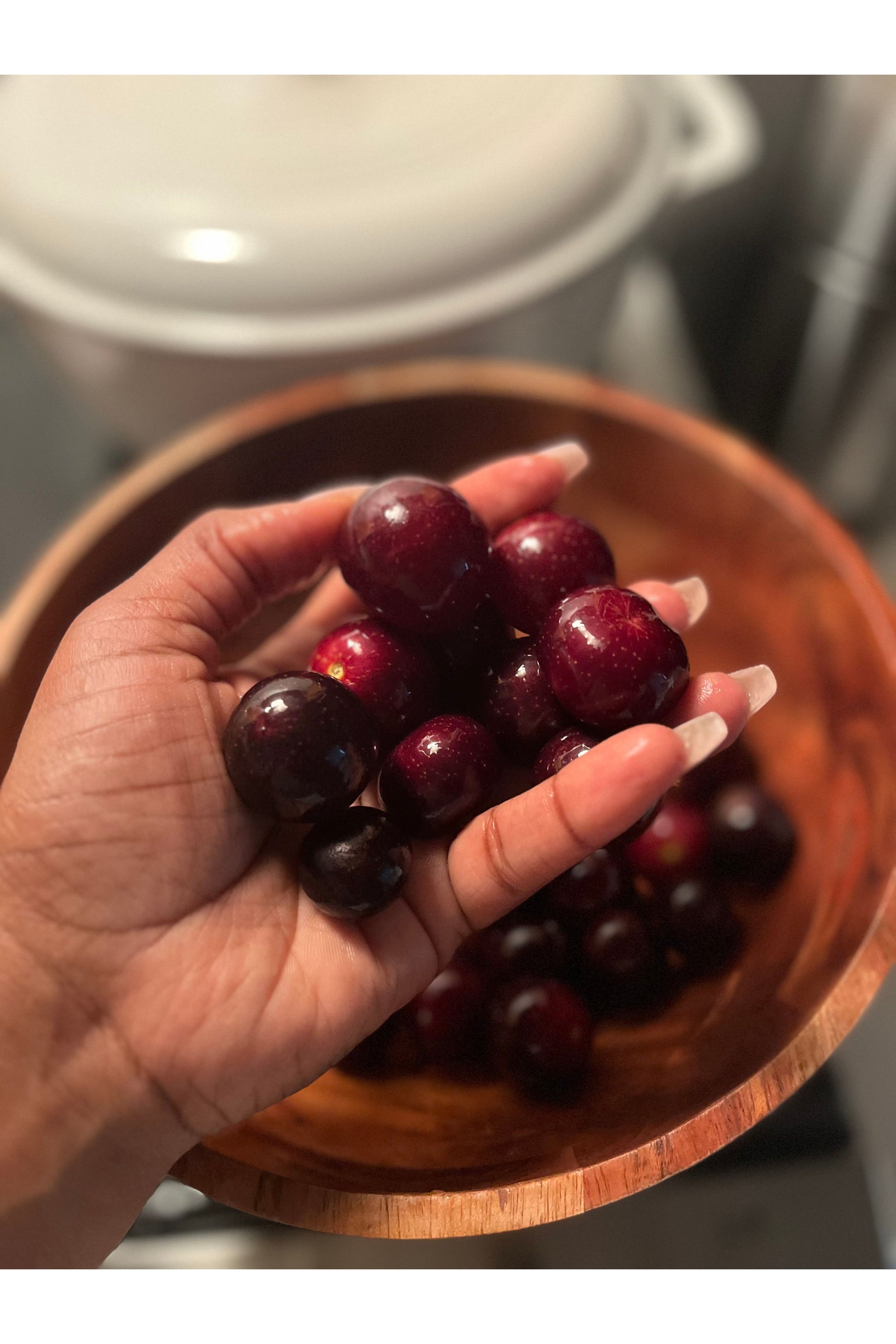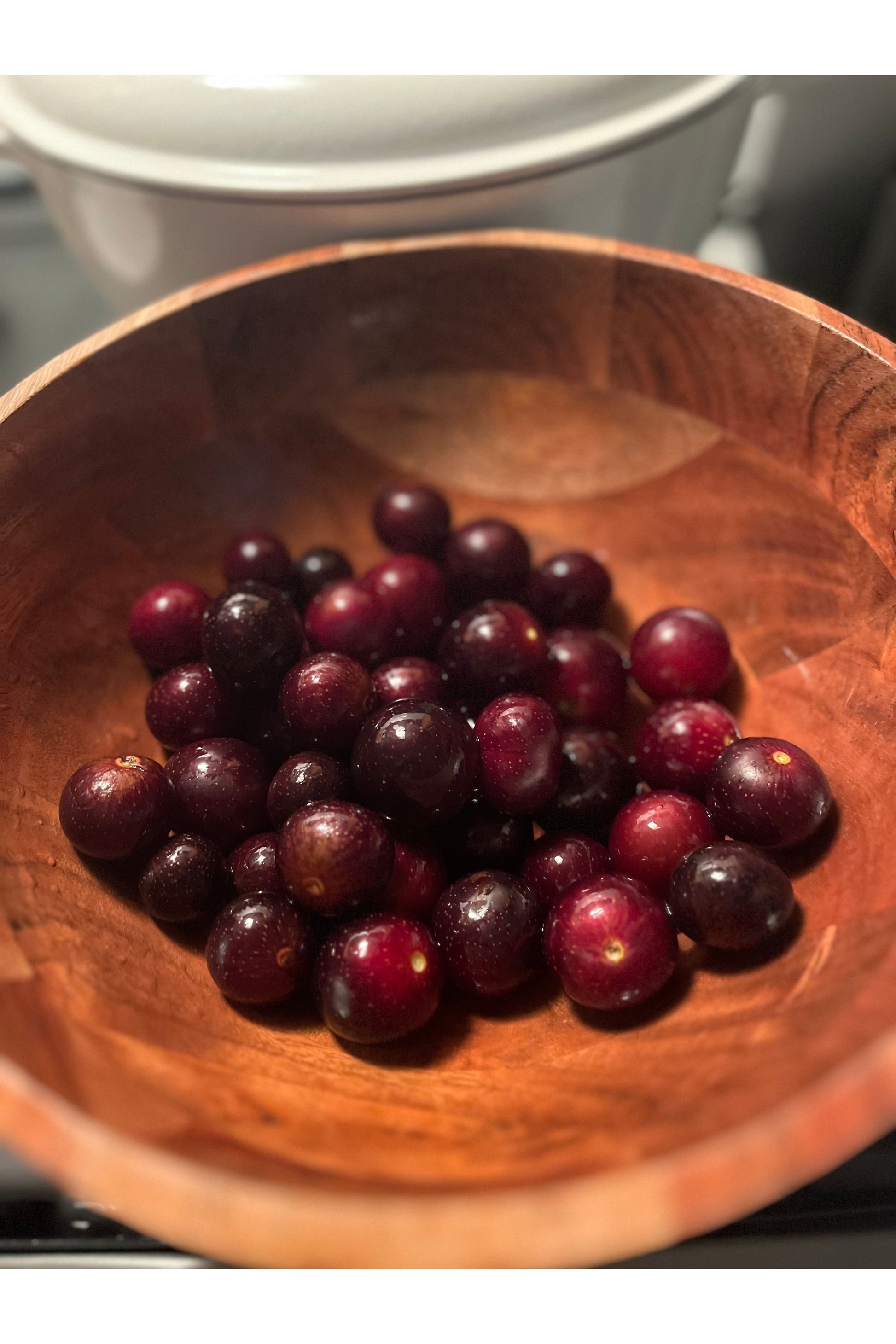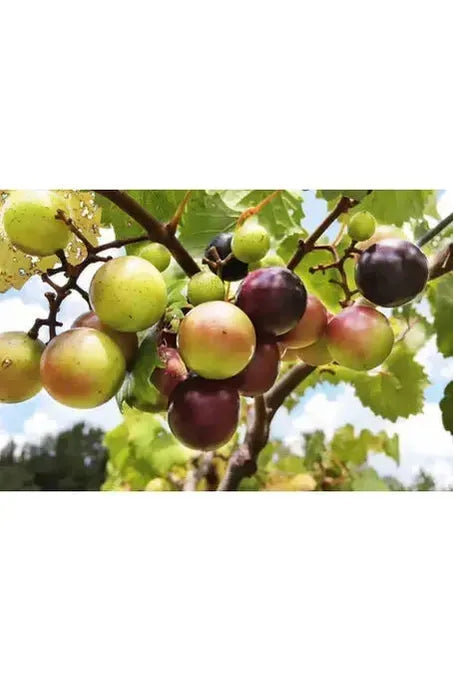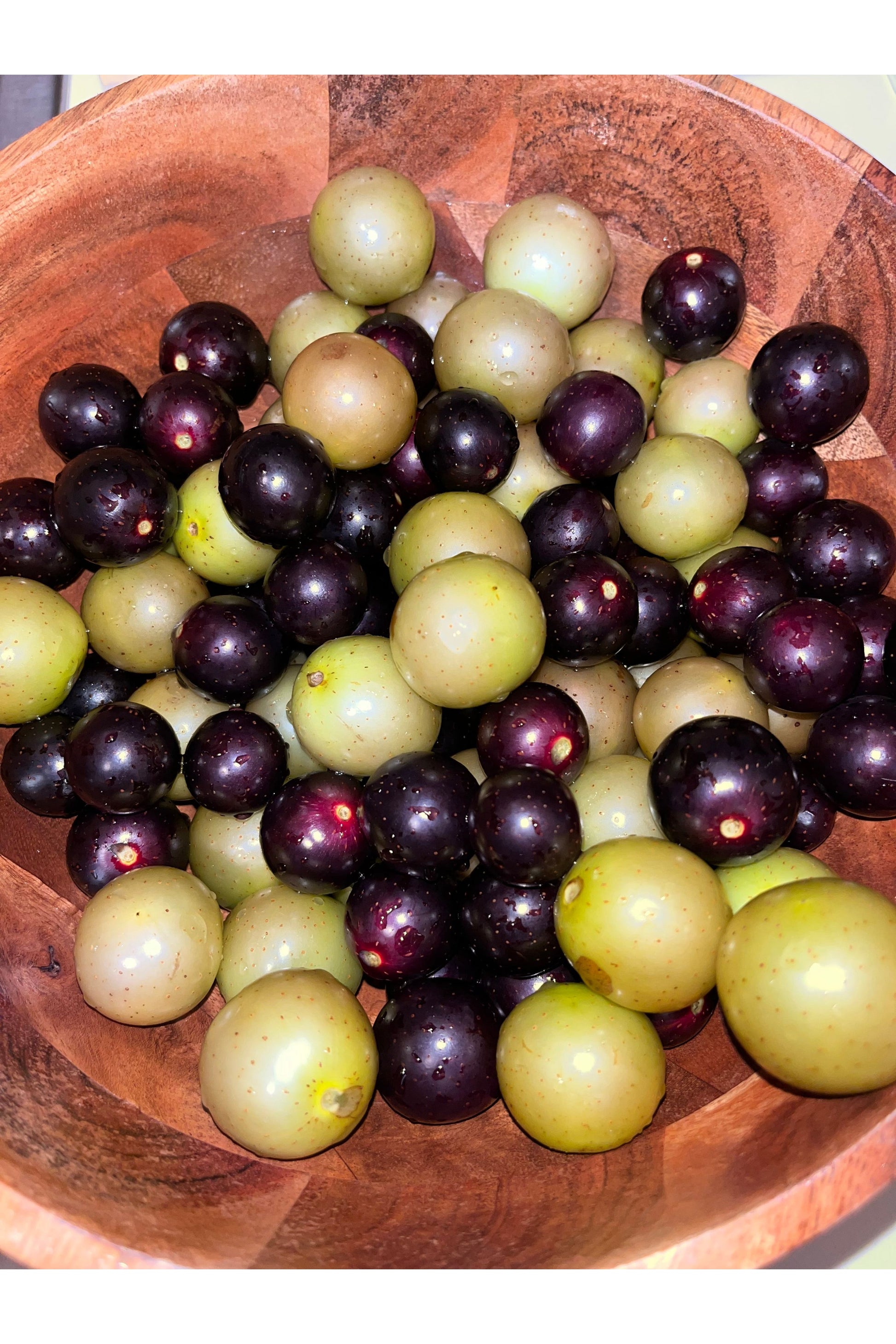Muscadine Grapes (Seasonal End August- October)
Muscadine Grapes (Seasonal End August- October)
Couldn't load pickup availability
Muscadine grapes are in season,
and Packed with ingredients to boost your immune system, give your skin a natural glow, and fight inflammation. Muscadine Grapes is a fruit crop native to America; it was the first grape species cultivated in the country. Muscadine grapes adapt well to a wide range of biotic and abiotic stresses and have thus been grown and vinified throughout the southeastern US for centuries. Muscadine grapes are commonly consumed fresh or processed into juice, wine, or jam.
The muscadine peel is a rich source of antioxidants, dietary fiber, flavonoids, and other beneficial phytochemicals including high levels of resveratrol, a polyphenolic compound reported to have antioxidant and anti-inflammatory properties. Muscadine grapes other beneficial compounds include anthocyanins and ellagic acid. So try a bag today you’ll be amazed at the benefits and flavor .

To eat a muscadine, place the grape with the stem scar facing upward in your mouth and squeeze or bite the grape. The pulp and juice will burst through the skin into your mouth. You have several options on how to eat a muscadine grape.
You can take the skins out from your mouth right away, OR you can chew the skins lightly first to get more juice out, OR you can chew up the skins and swallow them. Some varieties have skins that are thinner and more flavorful than others.
You can swallow the pulp and seeds together OR you can work the seeds out of the pulp with your tongue, and spit them out before you swallow the pulp.
For the greatest nutritional benefit, eat the skins and seeds as well as the pulp and juice. New varieties are being developed that are seedless and have more edible skins. So far, these are mostly available for home garden planting, but watch for them in the market, too.

Share
